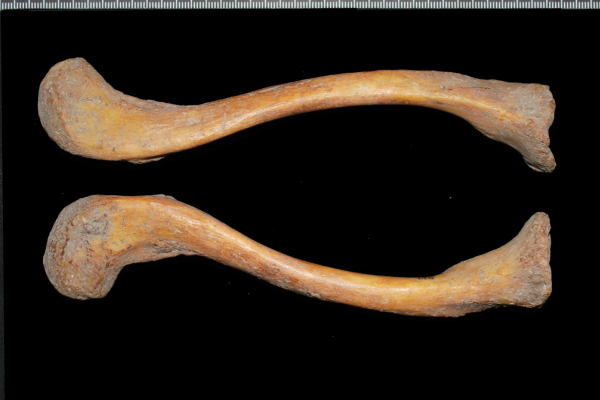Emma Brzezinski paper: Sex differences in workload in medieval Poland: Patterns of asymmetry and biomechanical adaptation in the upper limb at Giecz

Please check out PhD student Emma Brzezinski's first authored paper, entitled Sex differences in workload in medieval Poland: Patterns of asymmetry and biomechanical adaptation in the upper limb at Giecz! The article is open access.
Objectives
This study characterizes sexual dimorphism in skeletal markers of upper limb mechanical loading due to lateralization as evidence of division of labor in medieval Giecz, Poland.
Methods
Twenty-six dimensions for paired humeri, clavicles, and radii representing adult males (n = 89) and females (n = 53) were collected from a skeletal sample from the cemetery site Gz4. Percent directional asymmetry (DA) and absolute asymmetry (AA) for each dimension were compared among bones, osteometric subcategories, and sex. Additionally, side bias and sex differences were assessed in degenerative joint disease (DJD) and entheseal changes (ECs).
Results
Nearly all measurements revealed significant asymmetry favoring the right side. Asymmetry was most pronounced in midshaft dimensions with few sex differences. There were more correlations among dimensions within elements than between elements, mainly in the midshaft. No laterality in DJD frequencies was noted for either sex, but females demonstrated significantly lower odds of having DJD than males in most joints. Most ECs demonstrated a right-bias and association with DA with no sex-specific patterns except the biceps brachii insertion, where females were ~5 times more likely to be scored “right” than males.
Discussion
The general lack of sex differences in asymmetry and ECs suggests similarly demanding workloads for females and males, with the exception of sex-specific functional loading differences in the forearm. Further, DJD data suggest males engaged in more intensive activities involving the upper limb. These results enhance understanding of workload in this important historical period and provide a comparison for asymmetry in past populations.
